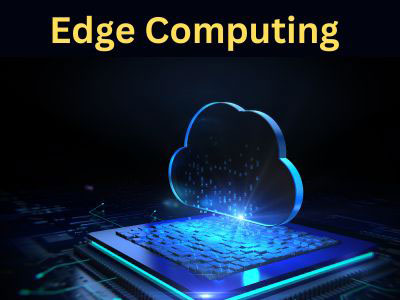Key Takeaway
Industrial edge management refers to the process of overseeing and maintaining edge devices in an industrial setting. It involves monitoring the performance of devices, managing data flow, and ensuring proper functioning of systems.
Effective edge management in industrial environments ensures that data is processed and analyzed in real-time, helping businesses optimize operations, reduce downtime, and improve productivity in industries like manufacturing and energy.
Defining Industrial Edge Management
Industrial Edge Management refers to the strategy and processes used to manage computing resources at the edge of industrial networks. This approach enables real-time data processing close to the source of data generation, reducing latency and enhancing performance in industrial environments.
By leveraging edge computing, industrial organizations can make quicker, data-driven decisions, improving operational efficiency and minimizing downtime.

The Importance of Managing Edge Devices in Industrial Environments
Effective management of edge devices is crucial in industrial environments to ensure continuous operation, data integrity, and system security. Edge devices are often deployed in remote or hard-to-access locations, making their management more complex than traditional IT systems.
Device monitoring is essential to detect issues such as hardware failures, connectivity problems, or software malfunctions. Remote management tools can help operators troubleshoot and resolve issues without needing to physically access the device, reducing downtime and maintenance costs.
Another key aspect of management is security. Edge devices are often exposed to potential cybersecurity threats, especially in industrial settings where sensitive data is handled. To mitigate these risks, regular software updates, security patches, and vulnerability assessments are necessary to protect devices from threats. Advanced authentication protocols and encryption techniques must also be implemented to safeguard the data and ensure secure communication between devices.
Data management is another critical factor. Since edge devices process data locally, it’s important to manage how data is stored, processed, and transmitted. Using edge analytics to filter and prioritize data can help reduce unnecessary data transmission to the cloud, thus minimizing latency and bandwidth consumption.
You May Like to Read
Strategies for Effective Industrial Edge Management
Effective management of industrial edge systems is crucial for ensuring that edge devices operate optimally and deliver value. Key strategies include centralized monitoring of edge devices, ensuring consistent software updates to avoid vulnerabilities, and integrating AI-based predictive maintenance. Since edge devices are distributed across various locations, managing them individually can be challenging. Implementing a unified platform for monitoring, controlling, and updating edge devices simplifies management. Additionally, edge orchestration tools help automate tasks, such as device provisioning, software deployment, and data synchronization, to ensure that edge devices work efficiently in harmony with the larger IT ecosystem. Proper security protocols, including encrypted data transfer and access controls, are also essential for protecting edge networks from potential threats.
Tools and Platforms for Industrial Edge Management
Managing industrial edge devices requires specialized tools and platforms that ensure seamless integration, efficient operation, and real-time data processing. Edge management platforms provide the necessary infrastructure to monitor, control, and secure edge devices deployed in industrial environments. These platforms enable IT teams to manage the lifecycle of edge devices, from deployment to updates and troubleshooting, ensuring that systems remain secure and functional.
One of the key tools in industrial edge management is edge orchestration software, which helps automate the distribution of workloads across edge devices. By intelligently allocating tasks based on device capabilities, location, and network conditions, edge orchestration platforms optimize performance and reduce the strain on individual devices. This ensures that each device processes data efficiently while maintaining the overall integrity of the network.
Another important tool is remote management software, which allows operators to monitor edge devices from a centralized location. This is especially useful in industries where devices are deployed in remote or hard-to-reach areas, such as energy plants, oil rigs, or agricultural fields. Remote management tools enable quick troubleshooting and the ability to push updates or patches to devices without needing physical access. Additionally, cloud-based monitoring platforms often complement edge management by providing high-level analytics and insights into the performance of edge devices, enabling operators to optimize their systems and make data-driven decisions.
Challenges and Solutions in Industrial Edge Management
Managing industrial edge devices comes with several challenges, primarily due to the scale and complexity of operations in industrial environments. One key challenge is the remote and distributed nature of edge devices, which are often deployed in harsh conditions such as factories or outdoor sites. This makes monitoring and maintaining them difficult, particularly in terms of performing software updates or troubleshooting issues. A solution is the adoption of remote management tools and over-the-air (OTA) updates, which enable operators to maintain devices without requiring on-site visits.
Another challenge is ensuring that industrial edge devices can handle large volumes of data in real time. Edge devices may struggle with processing high-frequency data, leading to system delays or failures. Implementing data filtering techniques at the edge to transmit only relevant information to the cloud can address this problem, optimizing the use of both computational resources and network bandwidth. Additionally, AI-driven predictive maintenance can be employed to monitor device health, proactively addressing potential issues before they cause failures.
Lastly, the integration of industrial edge devices with existing infrastructure and legacy systems can present compatibility issues. A solution lies in standardizing communication protocols and using adaptable platforms that can bridge the gap between old and new technologies. This ensures that edge devices can function seamlessly within the industrial ecosystem.
Conclusion
Industrial edge management refers to the processes, tools, and technologies used to monitor, control, and optimize industrial edge devices and systems. This involves managing the deployment, configuration, and maintenance of edge devices that are crucial for collecting and processing data in industrial environments. Effective industrial edge management ensures that devices are performing optimally, are secure, and can seamlessly integrate with other systems. This management is vital for scaling industrial IoT networks and ensuring that real-time data processing leads to increased operational efficiency, predictive maintenance, and automated decision-making.
